Mint Propagation: 4 Simple Ways to Grow Endless Fresh Leaves
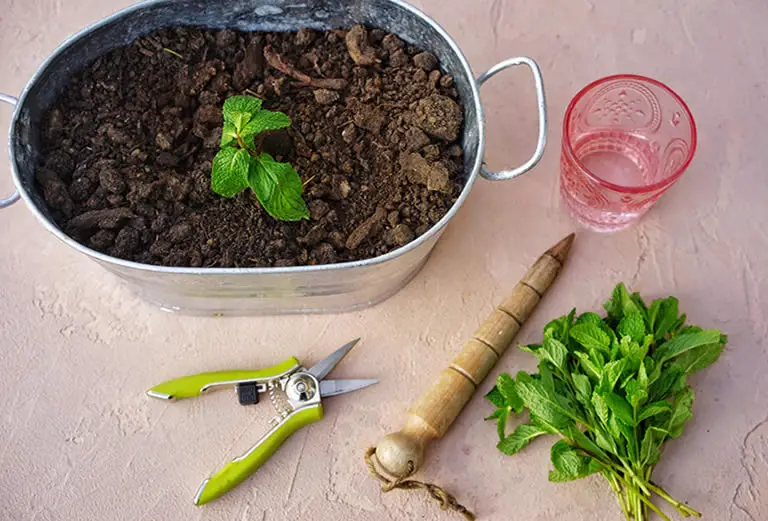
Mint is one of the easiest herbs to propagate—and one of the fastest to multiply. Whether you’re growing spearmint, peppermint, or one of the many flavored varieties like chocolate or pineapple mint, the propagation methods are quick, effective, and work for all types.
The most common methods are stem cuttings and division, but you can also grow mint by layering or starting from seed. Each approach has its benefits, and most take root in just a couple of weeks.
Here’s how to propagate mint at home—indoors, outdoors, or even right in a glass of water.
Table of Contents
Best Time to Propagate Mint
You can propagate mint at almost any time of year, but the best results happen during spring and summer, when the plant is growing actively.
In cooler climates, avoid propagating outdoors late in the season unless you can bring new plants inside before frost.
Method 1: Propagation from Stem Cuttings (Quick and Easy)
Stem cuttings are the easiest and most popular way to grow more mint—especially for indoor gardeners.
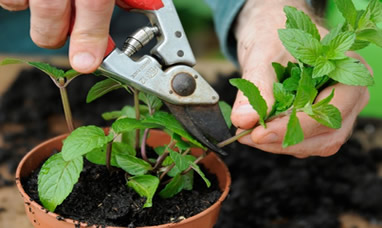
-
Cut a healthy stem 4–6 inches long, just below a node.
-
Remove the leaves from the lower half of the stem.
-
Let the cutting rest for an hour to slightly dry.
-
Insert the base into moist, well-draining soil or water (see bonus method below).
-
Keep in bright, indirect light and lightly mist the soil if it begins to dry.
Roots typically appear in 7–10 days. Once new growth appears, the plant can be moved to a larger pot or into the garden.
Method 2: Division (Ideal for Overgrown Plants)
Mint spreads through underground runners, so dividing the root ball is a great way to multiply it—especially with mature outdoor plants.
-
Dig up the plant or remove it from its pot.
-
Gently shake off excess soil and locate natural divisions in the root system.
-
Use your hands or a sharp knife to split the root mass into sections, each with stems and roots.
-
Replant divisions in fresh soil and water thoroughly.
You can divide mint every 1–2 years in spring or early fall to rejuvenate the plant and prevent overcrowding.
Method 3: Layering (Great for Garden Beds)
Layering allows mint to root directly in the soil without cutting it first.
This method works especially well in outdoor beds and raised containers.
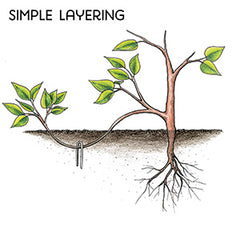
-
Choose a healthy stem that lies close to the soil surface.
-
Strip the leaves from a 2-inch section and gently press it into the soil.
-
Use a U-shaped pin, wire, or small rock to hold it in place.
-
Lightly cover with soil and keep the area moist.
Roots will develop along the buried section in 1–2 weeks.
Once rooted, cut the stem from the parent plant and transplant it wherever you like.
Method 4: Growing Mint from Seed (Less Common)
While it’s not the fastest option, mint can be grown from seed.
This is most useful for starting large batches or testing different varieties.
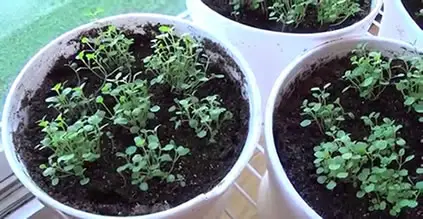
-
Sow seeds on the surface of moist, lightweight seed-starting mix.
-
Lightly press them in, but do not bury them too deep.
-
Cover with plastic wrap or a humidity dome and place in bright, indirect light.
-
Keep the soil lightly moist but not wet.
Germination can take 10–16 days, and seedlings are ready for transplanting once they have several true leaves.
Note: Many mint varieties are hybrids, so seeds may not grow true to the parent plant.
For reliable results, use cuttings or division.
Bonus: Water Propagation with Feed
Mint cuttings root extremely well in water, making this a perfect low-effort method.
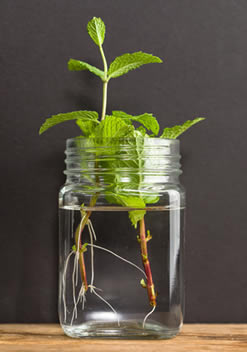
-
Prepare your cutting as described above.
-
Place the base in a clean glass of water, ensuring only the stem is submerged.
-
Keep the glass in a bright, warm spot out of direct sun.
-
Change the water every 2–3 days to keep it fresh.
Bonus Tip: Add a drop or two of liquid herb fertilizer or soluble feed (a balanced organic blend like 5-5-5 like this one or 10-10-10 like this one) once a week to support root development.
Roots usually reach transplanting length (about 1 inch) in 1–2 weeks. Once they do, plant in moist soil and water gently after a few days.
Outdoor Mint Propagation
Mint is a dream to propagate outdoors and will often spread on its own if left unchecked.
You can multiply it easily using:
-
Stem cuttings planted directly in moist soil
-
Division from an established clump
-
Layering branches into adjacent soil
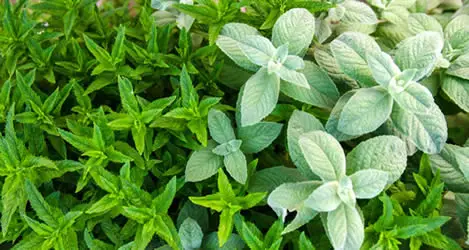
To prevent mint from spreading too far, plant it in sunken containers, raised beds, or use physical barriers around the roots.
If you’re growing outdoors in zones 3–11, you can propagate mint through the whole growing season—just give new plants a few weeks to root before the first frost.
Final Thoughts
Mint is one of the most generous plants you can grow—once you’ve got one, you can easily create dozens more with just a few snips or divisions.
Whether you’re rooting cuttings in a jar on your windowsill or digging up a patch in the garden, mint rewards even the simplest propagation effort with lush, fragrant growth.
Just give your new plants a little light, water, and room to spread—and you’ll never run out of fresh mint again.
If you want detailed instructions on the care of this herb visit our article Mint Plant Care: How to Grow This Refreshing Herb Indoors and Out.
Thanks for reading! I'm Michael — houseplant fanatic and your Pinterest plant guide.
Follow me on Pinterest for fresh updates 🌿



